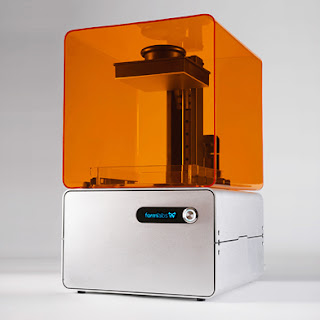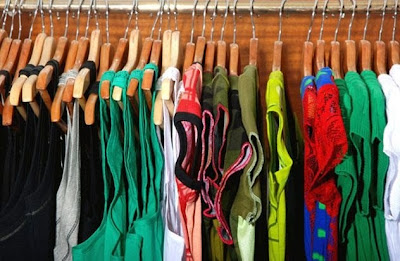Next-Generation Consumer 3-D Printer Arrives, but a Lawsuit Looms
Formlabs is bringing down the costs of a better 3-D printing technique, but it must survive a patent lawsuit.
The Form 1 3-D printer is now coming off a factory production line.
Desktop 3-D printers are about to become available with higher-definition capabilities, with a new startup shipping its first model this month.
At $3,299, the Form 1 could expand the market for 3-D printing technology. It can produce much higher-fidelity plastic objects than the consumer desktop printers available today. But it is still cheap enough to be affordable to a wide swath of professional designers, engineers, and dedicated tinkerers. The Form 1 can, for example, create detailed functioning prototypes with mechanical parts, such as precise screw threads.
“We wanted a product with a discretionary price point,” says Formlabs cofounder Natan Linder, a PhD student at MIT’s Media Lab. “So you don’t think about it. You might not need a signature from your boss. Maybe you can order it like you do a laptop.”
Extra 3D Printer guns
The process the Form 1 printer uses—stereolithography—is not new. It was commercialized in the 1980s by the company 3-D Systems, which made $353 million in revenue last year selling 3-D printers, materials, and services. The process relies on a laser that, layer by layer, shapes a liquid plastic resin that hardens when exposed to a particular wavelength of light.
Formlabs says its new device can print layers as thin as 25 microns and can produce objects at half the scale of typical consumer desktop printers, which function more like automated hot-glue guns (see “What Yoda Taught Me about 3-D Printing”). Such machines often don’t produce the level of detail necessary for the professional prototyping functions that 3-D printing is often touted to fulfill.
Extra Mojo_Engineer-removing-part
The Form 1, an attractive desktop cube, has been available on preorder since November. After some production delays, the company began to ship it last week to a few of the more than 1,000 initial Kickstarter backers. These backers helped the company raise almost $3 million last year.
Think small: The miniature Eiffel Tower shown here was made using Formlab’s machine
The idea for the product took shape when three MIT graduate students met in 2009 in a class called How to Make (Almost) Anything. They realized that making “almost anything” outside of the class would be much harder without access to the top-of-the-line 3-D printers in MIT’s Media Lab. So they created Formlabs in 2011.
Because Formlabs uses off-the-shelf lasers and takes advantage of software advances and cheap computing components for the print engine, the company can sell the printer for tens of thousands of dollars less than similar-quality printers already on the market.
Linder says his company is focused on expanding the market for the technology among professionals. He notes that there are 10 million people who use computer-aided design software, many of whom make 3-D models, and yet only tens of thousands of professional-grade 3-D printers have been sold. In addition to prototyping and design, he says, there could be some limited manufacturing uses for the printer, such as making custom structures that require detail, like jewelry or mock body parts for doctors in training.
Tucker Spofford, a Seattle-based designer for the firm Artefact who backed the project on Kickstarter, ordered one for his home. He got it, he says, because the “finish” quality of objects will be much better, and also because the product design looked good and the printer would require less finicky calibration. He says that once the product is more proven, his firm would probably want one.
“It’s like a DSLR camera. If you were into photography, then you got one. I think 3-D printers are getting to that cusp. And this product especially aims right at those people,” he says.
The company could face a big roadblock, however. Formlabs is in the middle of a court fight with 3-D Systems, which has accused it of patent infringement (Formlabs says that at least some of the patents have expired, but Linder wouldn’t comment).
The production of the Form 1 has not been without challenges, either. For now, the assembly is being done in a factory in California. Linder says working fast enough to meet the commitments to Kickstarter backers hasn’t been easy. Some backers, including Spofford, complained about not being kept informed about delays.
Another focus has been developing the proprietary plastic for the printer. This will sell for $149 a liter, which would be enough to make, in theory, 76 rook chess pieces. So far Formlabs has made a clear resin, but now a team is working on other colors and other feels to the plastic that might make an object harder, softer, or more rubbery, says Linder. It is also trying to make its software as easy to use as possible, though it hasn’t yet reached the “just click print” level (see “Wanted: A Print Button for 3-D Objects”).
With plenty of work to do, Formlabs is busy. “The office is a mess,” says Linder. Last week he was manning things himself as much of his team was away at two key conferences, the Maker Faire in California and the International Contemporary Furniture Fair in New York.
Extra The New Z Printer 850 by 3D Systems








Comments
Post a Comment